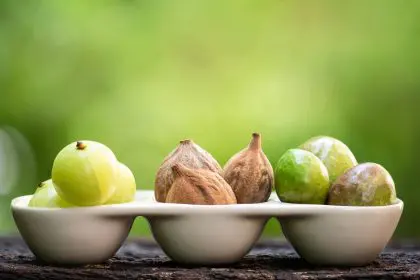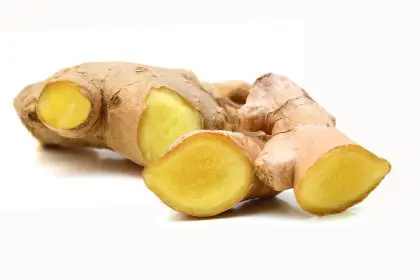The search for ways to maintain mental sharpness through aging has led researchers to some surprising places—including the spice rack. While pharmaceutical approaches to cognitive decline continue advancing, mounting evidence suggests that certain culinary spices may offer significant neuroprotective benefits. These flavor-enhancing ingredients, already present in many kitchens, contain powerful bioactive compounds that appear to support brain health through multiple mechanisms.
Recent neuroimaging studies demonstrate that regular consumption of specific spices correlates with improved memory performance and enhanced neural connectivity in regions associated with cognitive function. Even more promising, these benefits appear most pronounced in adults over 60, precisely when age-related memory concerns typically emerge.
The science behind these kitchen staples reveals how traditional culinary wisdom often preceded scientific validation by centuries. Ancient medical traditions across multiple cultures recognized these spices’ cognitive benefits long before modern research confirmed their mechanisms of action.
Turmeric delivers curcumin directly to neural pathways
The vibrant yellow-orange powder derived from the Curcuma longa plant contains compounds that actively target multiple aspects of brain health. Turmeric’s primary active component, curcumin, demonstrates remarkable abilities to cross the blood-brain barrier—a crucial factor for any substance intended to influence neural function.
Once in brain tissue, curcumin works through several mechanisms simultaneously. It reduces inflammation in neural tissues by inhibiting inflammatory enzymes and blocking the production of inflammatory proteins that contribute to cognitive impairment. This anti-inflammatory action proves particularly important since chronic low-grade brain inflammation increasingly appears central to age-related cognitive decline.
Beyond fighting inflammation, turmeric helps clear protein accumulations associated with memory problems. Research conducted at major neuroscience centers has documented curcumin’s ability to reduce beta-amyloid and tau protein aggregations—both implicated in age-related cognitive disorders. These proteins can disrupt communication between neurons, but curcumin appears to help maintain clearer neural pathways.
Perhaps most directly relevant to memory function, turmeric increases brain-derived neurotrophic factor (BDNF), often described as “fertilizer” for the brain. This protein encourages the growth of new neurons and strengthens existing connections, particularly in the hippocampus—the brain region central to forming new memories.
Memory tests conducted with adults aged 60-85 show those consuming turmeric regularly performed better on word recall tasks and demonstrated faster processing speeds compared to control groups. Neuroimaging studies further reveal that turmeric consumption correlates with increased connectivity between brain regions involved in memory formation.
Incorporating therapeutic amounts of turmeric into daily cooking requires some strategy. The spice contains only about 3% curcumin by weight, and this compound absorbs poorly when consumed alone. Combining turmeric with black pepper enhances curcumin absorption by up to 2,000% thanks to pepper’s piperine content. Additionally, consuming turmeric with healthy fats further improves bioavailability since curcumin dissolves in fat.
Practical culinary applications include adding turmeric to scrambled eggs, incorporating it into rice dishes, whisking it into salad dressings, or creating the traditional “golden milk” by simmering the spice with coconut milk and honey. For those seeking consistent daily intake, turmeric tea provides another flavorful option.
Saffron promotes neurotransmitter balance and cellular protection
Known primarily as the world’s most expensive spice, saffron delivers cognitive benefits that may justify its premium price. Derived from the dried stigmas of Crocus sativus flowers, this crimson spice contains unique compounds that directly influence brain chemistry related to memory function.
Saffron’s active components—safranal, crocin, and crocetin—demonstrate multiple neuroprotective mechanisms. These compounds help balance levels of key neurotransmitters including serotonin, dopamine, and glutamate, all crucial for optimal cognitive processing. By modulating these chemical messengers, saffron helps maintain the delicate neurochemical environment necessary for memory formation and recall.
The spice’s antioxidant properties provide additional brain benefits. As the body ages, oxidative stress damages cellular structures, including neurons. Saffron contains exceptionally potent antioxidants that neutralize free radicals in neural tissue, preserving cellular integrity. This protection extends to mitochondria—the energy-producing components within brain cells that become increasingly vulnerable during aging.
Multiple controlled trials examining saffron’s effects on cognitive function in older adults demonstrate impressive results. In one 12-week study of adults over 65, those receiving saffron extract showed significant improvements in both immediate and delayed memory recall compared to those receiving placebo. The saffron group also demonstrated better information processing speed and attention—cognitive domains that typically decline with age.
Brain imaging studies provide visual confirmation of these effects, showing increased blood flow to memory-related brain regions following regular saffron consumption. This enhanced circulation delivers more oxygen and nutrients to neural tissues while efficiently removing metabolic waste products that can impair function.
Despite its cost, incorporating small amounts of saffron into regular cooking provides cumulative benefits. The spice imparts its distinctive flavor and color even in minute quantities, making it more economical than its price suggests. Culinary traditions from Mediterranean and Middle Eastern regions offer numerous recipes featuring saffron, from classic rice dishes to seafood preparations.
For memory-focused consumption, adding a few threads to warm milk creates a traditional remedy consumed throughout the Mediterranean region. Saffron also pairs beautifully with cauliflower, enhances chicken dishes, and adds complexity to soups. When purchasing, look for deeply colored threads with a strong aroma, indicating higher concentrations of active compounds.
Cinnamon regulates brain glucose and reduces oxidative damage
This common baking spice extends far beyond flavoring holiday treats. Research reveals cinnamon contains compounds that protect neural tissue through multiple pathways, with particular benefits for memory and cognitive processing.
Cinnamon’s cognitive effects begin with its remarkable ability to regulate glucose metabolism in the brain. Neurons depend heavily on glucose for energy, but as we age, brain cells often develop insulin resistance, impairing their ability to utilize this critical fuel. Compounds in cinnamon help restore insulin sensitivity, ensuring neurons receive adequate energy for optimal function.
This metabolic regulation proves especially important since disrupted glucose metabolism in the brain correlates strongly with memory impairment. By helping maintain stable energy supply to neural tissues, cinnamon supports the energy-intensive processes of memory formation and retrieval.
Beyond its metabolic effects, cinnamon contains powerful polyphenols that inhibit the formation of tau aggregations in the brain. These protein tangles interfere with neural communication and are associated with cognitive decline. Laboratory analyses demonstrate that cinnamon’s active compounds can prevent these harmful protein structures from forming and may help disassemble existing aggregations.
The spice also demonstrates impressive anti-inflammatory properties in neural tissue. Cinnamaldehyde, a primary component of the spice, inhibits the production of inflammatory molecules that contribute to neural degeneration. This anti-inflammatory action helps preserve the delicate tissue structure necessary for memory processing and storage.
Human studies tracking the cognitive effects of regular cinnamon consumption reveal significant benefits for memory function. In a 12-week trial involving adults aged 60-75, participants consuming cinnamon daily showed better performance on word recall tests and demonstrated improved attention span compared to control groups. These improvements correlated with reduced markers of inflammation and oxidative stress in blood samples.
Two distinct types of cinnamon appear in markets: Ceylon (true cinnamon) and cassia (the more common variety in American supermarkets). While both offer health benefits, Ceylon cinnamon contains lower levels of coumarin—a compound that may stress the liver in high doses. For those consuming cinnamon daily for cognitive support, Ceylon varieties provide a safer option for long-term use.
Incorporating memory-supporting amounts into daily eating patterns proves surprisingly easy. Adding cinnamon to morning coffee, oatmeal, or yogurt provides consistent exposure. The spice also complements roasted sweet potatoes, enhances stewed fruits, and adds complexity to savory dishes like Moroccan tagines. For maximum benefit, choose freshly ground cinnamon rather than pre-ground versions, which rapidly lose potency.
Rosemary enhances memory through aromatic compounds
This Mediterranean herb enjoys a centuries-old reputation as the “herb of remembrance.” Modern research now validates this traditional association, revealing that rosemary contains compounds that directly stimulate memory and cognitive function through multiple pathways.
Rosemary’s cognitive benefits begin with 1,8-cineole (eucalyptol), a terpene that easily crosses the blood-brain barrier. This compound inhibits acetylcholinesterase—an enzyme that breaks down acetylcholine, a neurotransmitter essential for memory formation. By preserving acetylcholine levels, rosemary helps maintain the neural signaling necessary for creating and retrieving memories.
The herb’s aromatic compounds provide additional cognitive benefits through a fascinating mechanism: stimulation of the olfactory system directly activates the hippocampus, the brain region central to memory processing. This connection explains why even inhaling rosemary’s scent can produce immediate improvements in memory recall, a phenomenon documented in multiple controlled studies of adults over 65.
Carnosic acid and rosmarinic acid, two powerful antioxidants found in rosemary, provide further neuroprotective effects. These compounds neutralize free radicals in neural tissue, preventing the oxidative damage that contributes to cognitive decline. They also stimulate the production of nerve growth factor (NGF), a protein that supports the survival and growth of neurons involved in memory processing.
Controlled trials examining rosemary’s effects on cognitive function demonstrate concrete benefits. In one study involving adults aged 65-90, participants who consumed rosemary daily for six weeks showed significant improvements in speed of memory recall and accuracy on working memory tasks compared to control groups. These cognitive enhancements correlated with increased blood levels of rosemary’s active compounds.
Perhaps most intriguing, rosemary appears to provide both immediate and cumulative cognitive benefits. Acute effects occur within hours of consumption, while regular intake over weeks leads to more sustained improvements in memory function. This dual-action profile makes rosemary particularly valuable for supporting cognitive health throughout aging.
Incorporating this herb into daily eating patterns offers numerous options. Fresh rosemary infused in olive oil creates a brain-healthy dressing for salads and vegetables. The herb pairs beautifully with roasted potatoes, enhances the flavor of grilled meats, and adds aromatic complexity to soups and stews. For consistent daily consumption, rosemary tea provides another effective delivery method.
Interestingly, inhaling rosemary essential oil offers complementary benefits through direct activation of memory centers via the olfactory pathway. This aromatherapy approach can supplement culinary consumption, creating a multi-sensory strategy for supporting memory function.
Creating a memory-supporting spice blend
For maximum cognitive benefits, combining these four spices creates a synergistic effect greater than any single ingredient alone. Their diverse mechanisms of action—anti-inflammatory, antioxidant, neurotransmitter regulation, and metabolic support—complement each other to comprehensively support brain health.
A practical approach involves creating a pre-mixed spice blend kept readily accessible in the kitchen. Combining ground turmeric, cinnamon, and rosemary with a tiny amount of powdered saffron creates a versatile mixture suitable for various culinary applications. Adding black pepper to this blend enhances the absorption of turmeric’s active compounds, while storing it in an airtight dark container preserves potency.
This memory-supporting blend can be sprinkled on morning eggs, stirred into soups, rubbed on proteins before cooking, or added to roasted vegetables. The flavor profile offers sufficient versatility to complement both sweet and savory dishes without overpowering other ingredients.
For those concerned about altering familiar recipes’ flavors, capsules filled with the spice blend provide an alternative delivery method. This approach allows consistent consumption without culinary compromises, though it misses the potential sensory benefits that cooking with these spices provides.
Supporting spices with complementary dietary patterns
While these four spices offer significant brain benefits, their effects multiply when incorporated into broader dietary patterns supporting cognitive health. The Mediterranean and MIND diets, both associated with reduced cognitive decline, feature liberal use of these spices alongside other neuroprotective foods.
Combining these spices with omega-3 rich foods like fatty fish enhances their anti-inflammatory effects in neural tissue. Similarly, pairing them with deeply colored fruits and vegetables multiplies their antioxidant protection through complementary compounds. This food synergy creates more comprehensive brain support than any single ingredient can provide.
Hydration status also influences how effectively these spices’ active compounds reach neural tissue. Maintaining consistent water intake throughout the day enhances blood flow to the brain and supports the distribution of beneficial compounds from these spices to target tissues.
Timing considerations may further optimize benefits. Some research suggests consuming these spices earlier in the day aligns with natural circadian rhythms governing detoxification processes and nutrient metabolism. This morning consumption provides active compounds during peak hours of cognitive demand while allowing sufficient metabolism time before sleep.
Measuring cognitive benefits beyond standard memory tests
While formal memory assessments provide one measure of these spices’ effects, daily functional improvements often prove more meaningful. Many older adults using these spices consistently report practical enhancements in: Word recall during conversations; Reduced tip-of-the-tongue phenomena when retrieving names; Improved ability to follow multi-step instructions; Enhanced mental energy throughout the day; More efficient learning of new information and; Better recall of recently read material
These real-world cognitive improvements translate directly to maintained independence and life quality—outcomes that matter more than performance on standardized memory tests. The cumulative effect of daily exposure to these brain-supporting compounds appears particularly valuable for preserving these practical cognitive abilities.
As research continues exploring the relationship between culinary spices and brain health, these four kitchen staples offer accessible, affordable options for supporting cognitive function through normal aging. Their long history of culinary use demonstrates their safety, while emerging science validates their remarkable benefits for preserving the memories that define our lives and relationships.
















